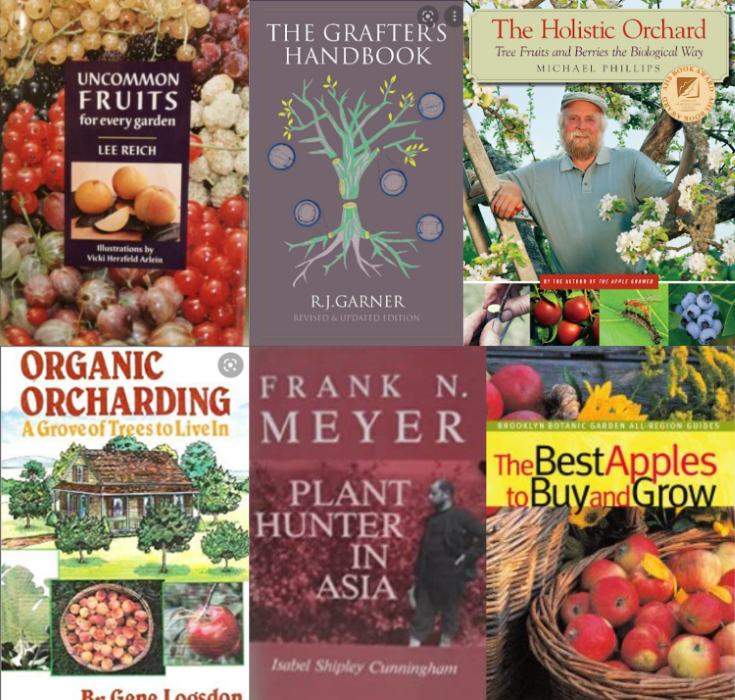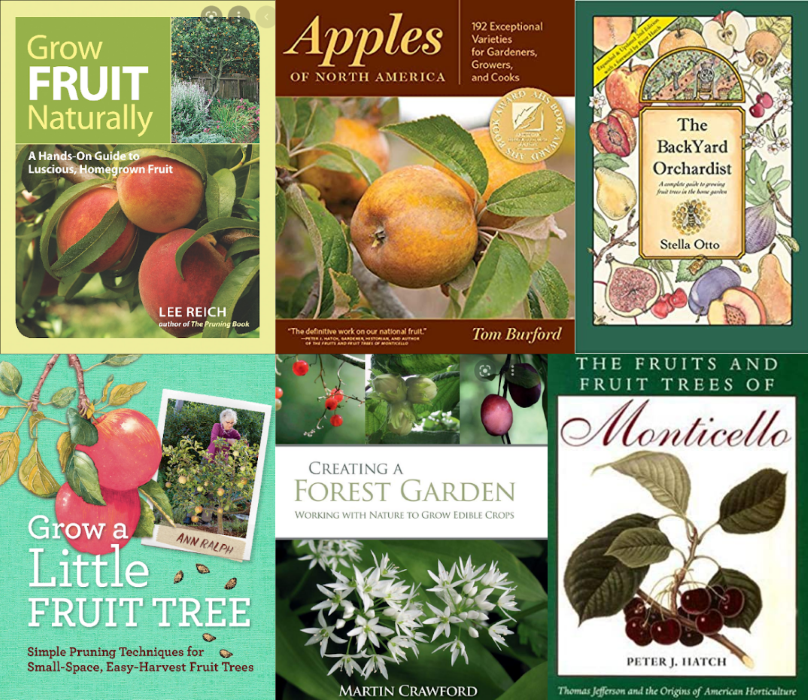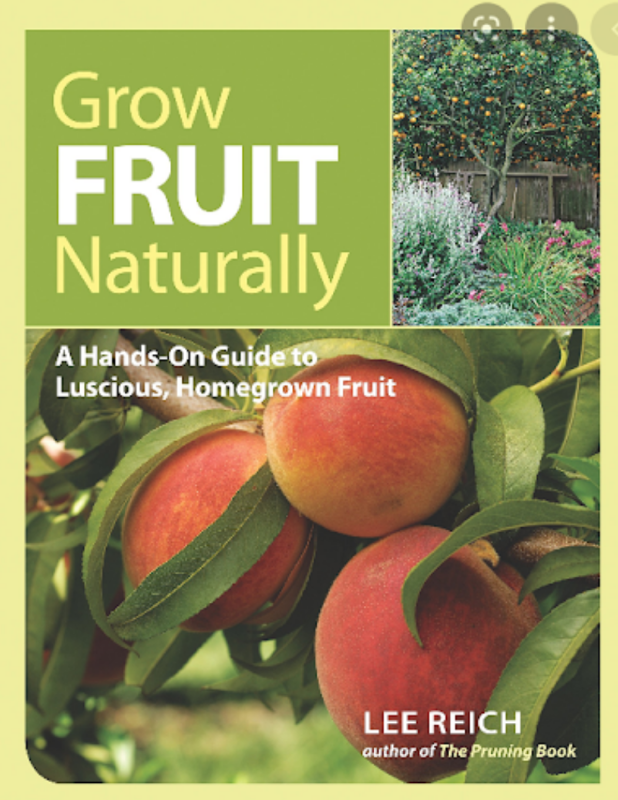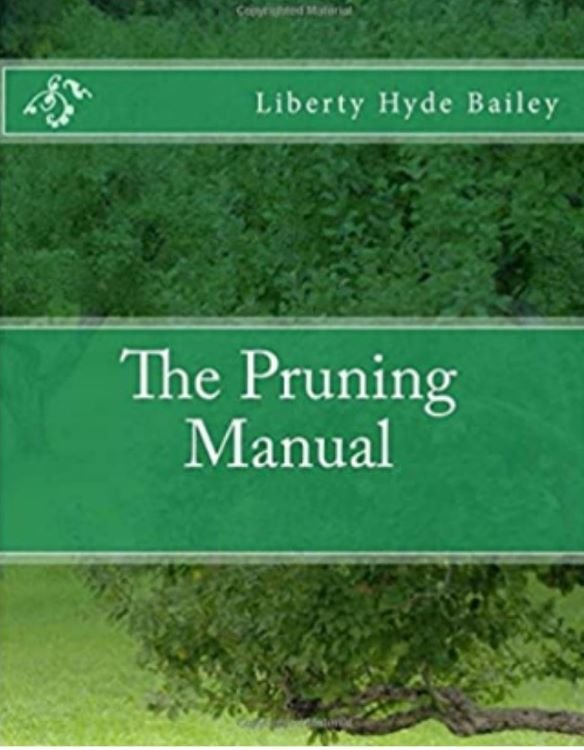Cozy Up With Our Organic Orcharding Book List!
Suggestions from real people in your local orcharding community? Yes please!
Nothing for sale here, no affiliate links to sway these recommendations, just good old fashioned sharing of favorites.
If you’ve lived in the Pacific Northwest for long, you know that keeping healthy & sane throughout our long, dark, damp winters is all about staying active, entertained, and creating a cozy nest to cuddle up in at the end of each mud filled day.
No problem for the orcharding enthusiast!
With plenty of interesting tasks to complete in the orchard year round, and a never ending supply of orchard related educational information available, any fruit growing enthusiast hungry to learn more should find no lack of entertainment to help them through these darker months.
To help jump start your winter cozying, we have compiled here a list of books recommended by a wild smattering of friendly local orcharding enthusiasts of all ages, interests, and skill levels. Please keep in mind that there is never only one right way to grow or care for an orchard. While almost all of these books do have an organic / natural growing theme the authors do take some slightly different approaches and have some differing ideas. You get to learn from them and come up with your own approach, and that’s part of the fun, right!?
If you see something that tickles your fancy, please consider first looking for these books from independently owned book-sellers or buying direct from the publisher. If you are someone who hasn’t been to a library in many years, you might be very surprised to learn how many of these titles could be available for free from your local library.
Without further ado, and in no particular order we present you with a delightful list of favorite fruity reading materials. There is certainly enough here to keep you occupied until buds begin to swell again.
Grow Fruit Naturally
By Lee Reich
An in-depth near encyclopedic listing of interesting fruits you may grow in your home orchard, and how to care for them each, with a focus on all-natural growing techniques. Heavy with helpful photos and illustrations.
“For beginner's I like Grow Fruit Naturally, by Lee Reich. It has nice photography, explanations, and covers a large variety of fruits.”
- Recommended by Chris Konieczka
Home Orchard Education Center Vice President
The Holistic Orchard: Tree Fruits & Berries the Biological Way
By Michael Phillips
Winner of the American Horticulture Society Book Award. Many consider this book to be a must read for aspiring orchardists of all skill levels. The basis of this book centers around the idea that growing fruit is about fostering nature, not manipulating it. Inside you will find information on orchard design, soil biology, organic management, grafting, planting, pruning, and selection. There is also an orchard calendar to guide growers through the year.
“The Holistic Orchard by Michael Phillips is a good overall resource. Has a lot of good info on soil health, organic pest management, pruning etc. ....very well written and thoughtful.”
- Recommended by Mark L.
North American Fruit Explorers Community
Grafter's Handbook
By RJ Garner (updated edition by Steven Bradley)
If you ask most experienced grafters for a book recommendation, this is the one you are likely to be referred to. Look for the revised and updated edition if you can find it. The original edition is still very relevant and will definitely help you learn to graft, but since the time of publishing a few, newer tools and materials have become available, such as grafting tape - goodbye rubber bands! “Everything the dedicated amateur, student and professional horticulturalist wants to know about grafting is here, clearly written in a concise and straightforward style. Chapters include Compatibility & Cambial Contact, Rootstocks & their Propagation, Tools & Accessories, Methods of Grafting and Grafting Established Trees.”
“It's a bible of grafting techniques, first published back in the 1940s. But has been reprinted and remains full of valuable info.”
- Recommended by Mark L, Tonia L, Kyle D, Larry S, and pretty much anyone you ask for a grafting reference book.
The Best Apples to Buy and Grow
By Brooklyn Botanic Garden (Beth Hanson, Editor)
“...a really good resource for apples. I got my copy 16 years ago when it was published in 2005. Among the contributors are Tom Burford, Ed Fackler, and Ted Swensen (past president of the Home Orchard Society). The "60 Great Apples" chapter is a phenomenal resource, and the rest of the book covers many topics, such as John Chapman, cider-making, and a pie recipe. Also there's a thorough index with varieties named anywhere in the book, as well as topics like "stool beds" and "heterozygosity". A compact, great resource, with a sturdy soft cover.”
- Recommended by Adam B.
Agrarian Sharing Network Community
Frank N. Meyer, Plant Hunter in Asia
By Isabel Shipley Cunningham
If you’re feeling a bit of cabin fever, this might be a good pick for you. Live and travel vicariously through the life of Frank Nicholas Meyer who was an agricultural explorer sent to Asia by the USDA at the turn of the century to collect new economically useful plant species. Said to be a very unique character, Frank is often said to be “the father of fruit explorers.” He participated in four expeditions through China, Siberia, Russia, Manchuria, Turkestan and Mongolia and many of the more than 2,500 plants he introduced are still in use in US agriculture today. Meyer disappeared off a steamer boat in 1918 and his body was never found.
- Recommended by Larry Stephenson
@ 2021 NAFEX Virtual Conference
How To Grow Your Own Nuts: Choosing, cultivating and harvesting nuts in your garden
By Martin Crawford (Photographs by Joanna Brown)
Good read for the home grower or future commercial producer. Some consider this to be an essential. Covers many areas, from growing, harvesting, processing to using nuts, all based on forest gardening principles. Lots of nice photos.
- Recommended by Oliver R.
Agrarian Sharing Network
The Grape Grower: A Guide to Organic Viticulture
by Lon J. Rombough
Probably one of the best and most complete references to organic grape growing that you will find in print. This book is appropriate for newbies and experienced grape growers, collectors, and commercial growers alike. It is a compilation of an extensive amount of knowledge and experience of Lon Rombough, one of North America's foremost authorities on viticulture.
This book could keep you busy for quite a while. It covers site planning and prep, training, trellising, pruning, propagating, & seasonal protection, as well as specific information about species, varieties, and hybrids. There is also technical information in regard to organic pest & disease management.
- Reccomended by Chris Homaniacs
Uncommon Fruits for Every Garden
By Lee Reich
Jujube, juneberry, maypop, pawpaw, shipova & more! Delectable rewards to the gardener willing to venture slightly off of the beaten path.
“....the best book covering tasty fruits which are less commonly grown. His descriptions of each species and detailed information on how to grow them are a nice read for anyone interested in growing fruit. Should be a new version coming soon, with a few new fruits.”
- Recommended by Kyle D.
Creating a Forest Garden: Working With Nature To grow Edible Crops
By Martin Crawford
Learn to design, implement, and maintain a “forest garden”. Trees, shrubs, perennials, short-lived plants and fungi all integrated into one system, with descriptions of many uncommon edible plants suitable for temperate climates.
“Our library has 4 copies of Crawford 's Creating a Forest Garden. I've read parts of it over time. Lots of information and aspects of growing many plants I don't know much about. Info on coppicing, which I find fascinating and useful, which trees shed rain more than others etc. I think I'd like to get my own book as it is fascinating and a real learning experience. I think I need to look for the nut book too as Oregon is adding many filbert acres and hopefully disease resistant Chestnuts are making a comeback. Amazing sad history about Chestnuts dying as they were a main staple for native americans.”
- Recommended by Lynnie B.
Organic Orcharding: A Grove of Trees To Live In
By Gene Logsdon
“An oldie but a goodie, this one is back in print. I like Genes' down to earth holistic take on ocharding and think it’s a great read read for home orchardists or homesteaders of all experience levels. He covers ALOT in this book and there is probably something new to learn or consider for almost everyone. From everything you need to know about planning your orchard, planting, propagating, pruning, fertility, pest control, animal friends & foes, disease ID, harvesting, and then even specific info about all kinds of common and uncommon fruit & nut trees. It’s worth a read and has earned a spot on my bookshelf.”
- Reccomended by Meagan M.
Home Orchard Education Center Communications Director
Organic Fruit Tree management
By Linda Edwards
A comprehensive reference guide for organic tree fruit management. Useful for both new and seasoned organic orchardists, as well as the conventional grower beginning to consider organic methods.
“It's an industry handbook but I have found it very useful and approachable on topics such as nutrition and Integrated Pest Management.”
- Recommended by Mark L
Grow A Little Fruit Tree: Simple Pruning Techniques for Small-Space, Easy-Harvest Fruit Trees
By Ann Ralph
Not sure how to prune your fruit trees to keep them at a manageable height? This book keeps popping up as highly recommended by many of the students in the HOEC arboretum as a clear and helpful outline guiding you through the steps needed to keep your fruit trees small and easy to maintain and harvest. Despite planting a tree that is on a dwarfing or semi-dwarfing rootstock, it still needs proper pruning to keep it at a manageable size, and this book will teach you how.
“It's made having backyard fruit trees so much more manageable. I can keep my trees healthy and happy with less work by keeping everything in reach, plus I can make good use of the space I have, and have more varieties of trees. Also, the recommendation to get root stock that does well in your area so you have less problems instead of a dwarfing root stock makes a lot of sense.”
-Recommended by Amy B.
Pacific Northwest Fruit Growers Community
Apples of North America: Exceptional Varieties for Gardeners, Growers, and Cooks
By Tom Burford
“The book is brimming with beautiful portraits of heirloom and modern apples of merit, each accompanied by distinguishing characteristics and common uses. As the view broadens to the orchard, you will find information on planting, pruning, grafting, and more. The exploration of the apple culminates with an overview of the fruit’s transformative capabilities when pressed, fermented, cooked, or dried. Beyond the polished and predictable grocery store display of Red Delicious and Granny Smith apples, a feast of beautiful and uniquely flavored North American varieties awaits the curious.”
- Recommended by Larry Stephenson
@ NAFEX Virtual Conference
How to Prune Trees & Shrubs: Easy Techniques for Timely Trimming
by Barbara W. Ellis
Brand new to pruning and looking for a real simple back to basics guide? Understanding what tools to use, and how a tree responds to different types of cuts makes a big difference. This little book explains how a plant responds to different pruning techniques, how and when to use basic cuts, and what tools to use.
-Recommended by Nicki Y
Home Orchard Education Center Secretary
Fruit, Berry and Nut Inventory, 4th edition: An Inventory of Nursery Catalogs and Websites Listing Fruit, Berry and Nut Varieties
By John Torgrimson (Author), Joanne Thuente (Compiler), Kent Whealy (Editor)
Looking for a description of a specific hard to find fruit that you can’t seem to track down elsewhere? This book is an ultimate reference for anyone who really wants to dive deep into the world of collecting fruit and nuts. It is “the catalog of all catalogs”, listing 280 nurseries offering nearly 6,000 varieties of fruits, berries, and nuts. Whether you are looking for rare nineteenth-century apples, descriptions of newly bred grapes, or even for unusual varieties of tropical fruits, it’s probably listed here. Thousands of diverse varieties are listed with notes about appropriate climates as well as pest & disease resistance.
- Recommended by Tonia Lordy,
Home Orchard Education Center Executive Director
The Fruits and Fruit Trees of Monticello
By Peter J. Hatch
This is an interesting book full of history, reference, and colonial fruit culture. Cultivating over 170 varieties of temperate fruits, Thomas Jefferson was an ambitious gardener whose surviving horticultural plans are among the most detailed of the period. Since 1982 Jefferson's fruit plantings, orchards, vineyards, berry squares, and nursery, have been gradually re-created at the gardens at Monticello in Charlottesville, VA. The gardens are a botanic showpiece, a source of food, and an experimental laboratory of ornamental and useful plants from around the world.
Author Peter J. Hatch was Director & curator of the grounds for many years.
- Recommended by Larry Stephenson @ NAFEX Virtual Conference
The Backyard Orchardist: A complete guide to growing fruit trees in the home garden, 2nd Edition
By Stella Otto
For novice and experienced fruit gardeners alike, this book covers lots of ground and is an encouragement for fruit growing enthusiasts to experiment with fruit varieties not readily available in our current industrial food system. Learn about healthy soils, planting sites, climate appropriate trees, pruning practices, growing requirements of popular temperate zone tree fruits like apples, pears, quince,medlar, cherries, apricots, pluots and apriums, peaches and nectarines, harvest information, and more. In-depth chapters on each fruit offering recommendations for disease-resistant varieties, dwarfing rootstocks, & pollination partners.
The pests and disease sections are well illustrated. Control solutions, both biological and synthetic have expanded greatly since the original edition, offering the gardener numerous choices based on their individual situation. There is even a seasonal to-do calendar, whoot!
- Recommended by Philadelphia Orchard Project
The Pruning Manual
by Liberty Hyde Baily
“This is one of my most prized books. Liberty Hyde Baily (1858 - 1954) was an incredible individual, responsible for a large number of things that we take as business as usual: Horticulture as a university department, the Extension Service, 4-H, and lots of others.While he was still a student at university he first wrote The Pruning Manual, and it was initially published in 1898. In the early 1950’s he realized it needed to be updated but due to failing health, he was unable to accomplish the task himself and passed the job on to Everett P. Christopher. Both men had a foreword in the new edition. Baily’s is quite moving and shows his love and dedication to the world of plants.
There are newer books (even newer editions of this one) that track with the changing ways that people deal with pruning; different methods, different techniques. But the ways that plants themselves grow has not changed at all. I would recommend searching out newer books for learning what is being done now, but as a truly basic text addressing the simple approach to controlling your plants, there is no better than this.”
- Recommended by Anthony Yeznach,
Home Orchard Education Center Treasurer
Best of luck this winter and happy reading all!
Please email Meagan at volunteer@homeorchardeducationcenter.org if you have a book to add to this list or would like to contribute by reviewing a book already listed here.
Thanks!
🍎
